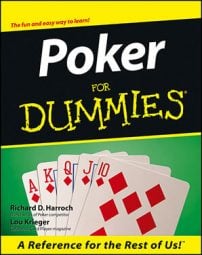Bluffing is a well-established and time-honored poker strategy. The next time you're inclined to attempt that particular type of larceny at the poker table, keep these bluffing tips in mind:
Be aware of how many players you'll have to bluff your way through. While one or even two players can be bluffed, don't think about trying to bluff more than two opponents unless you really have strong reasons to believe you'll succeed.
Take the opportunity to bluff if all of your opponents check on the previous betting round. It's even better if they've all checked on an expensive betting round. But your chances are diminished if any newly exposed cards appear to have helped one of your opponents.
Understand that a bluff doesn't have to work to make it the correct decision. After all, you're usually just risking one bet to win an entire pot full of bets. Bluffing has to work only some of the time to be the right choice. And even when you're caught, a bluff can be successful if it causes opponents to call when you are betting a strong hand.
Imply specific hands. Bluffs that seem to represent specific hands, such as a flush or a straight, have a much better chance to succeed than bets that appear to come out of the blue.
Avoid bluffing players who are either experts or brain dead. Instead, aim your bluffs at good opponents. Poor players will usually call "to keep you honest," while experts are more likely to see through your chicanery.
Zero in on weak players. It's much easier to bluff players who have shown weakness by checking, than to bluff those who have shown strength by betting on the preceding round.
Don't bluff for the sake of bluffing. Some players will bluff just to "advertise." There's no need to do that. Bluff if you believe you have a reasonable chance to succeed. You'll get plenty of advertising value because some of your bluffs will be picked off regardless of how well you assess your chances for success.
Strive for a tight, aggressive image. This kind of image has a much better chance of running a successful bluff than a player with a loose image. If you are seen as selective, tight, and aggressive, your opponents will not suspect a bluff when you bet. When you have a license to steal, use it.
Never bluff a hopeless hand when there are more cards to come. Instead, think about semi-bluffing, which allows you to win the pot two ways: Your opponents may fold, or you might hit your draw.
Attempt a bluff occasionally when all the cards are out and you have nothing, but don't overdo it. But if you have enough to beat a draw, save that additional bet and try to win in a showdown.

